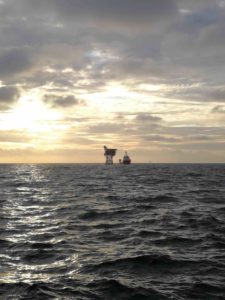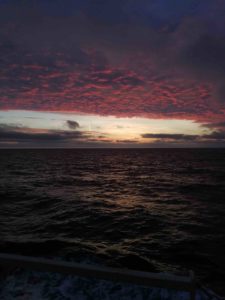Testing and improvising
24 June
Testing and improvising
Today, our third day on board, was dedicated to test some sampling equipment and procedures, which in theory should work. The difference between theory and real life can be as big as being on a ship in the harbor or on sea. So we learned a lot about how to do things and also not to do! It is luxury to have time for testing, so we are quite happy to learn already now, what is NOT working before we reach our real sampling location on the Dogger Bank, a large sandbank in a shallow area of the North Sea about 100 km off East England.
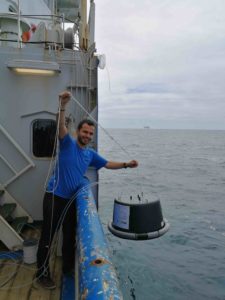
One of our ideas was to use a floating chamber to measure continiously methane above a so called “cold seep” at the Dogger Bank. Cold seeps are areas of the ocean floor where methane or other compounds are emitted. We would like to see, if there are higher methane concentrations measurable at the water surface and to take samples to determine the source of it. This was done before at other locations, and while our colleagues are busy with drilling cores out of the sediment, we were testing one of our sampling devices. You see here Hossein ready to throw our sophisticated sampling chamber into the sea. In principle it is a big bucket, with some lifting bodies around and connected via long tubings to our measurement instrument. Via an additional tubing we can also take discrete samples. So far, so good. For the first time in real conditions, we saw that our construction is not stable enough: even with only slight movements of water and ship it is jumping and sometimes turning around.
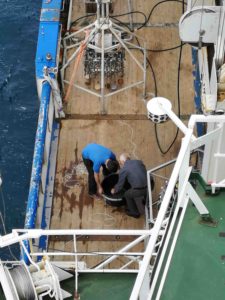
So we got it out of the water and supported by our colleague Sander we started the first round of improvement, adding some weights and changed the way of deployment. This stabilized the bucket, but due to the weights it became more heavy (as wished and expected) and the lifting bodies were not sufficient any more. 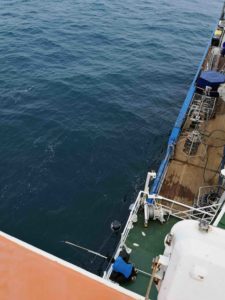 So we took it out again and added more lifting bodies. This seemed to work properly and improved the design, although we are still not ready for an “unmanned” 48h operation. So tomorrow we will continue and also connect the measurement instrument to see if it works.
So we took it out again and added more lifting bodies. This seemed to work properly and improved the design, although we are still not ready for an “unmanned” 48h operation. So tomorrow we will continue and also connect the measurement instrument to see if it works.

As our time on the Dogger Bank is limited and our plans are ambitious, we also tested the water sampling and its procedures. Water sampling is done by using a rosette of Niskin bottles. The rosette is lowered in the water and the bottles can be closed individually at the depths the scientists decide on. While the rosette is in the water, an incorporated measurement instrument – a so called CTD – shows us in real time the salinity, the temperature and the pressure of the water. By this we have a first impression, how the water body is structured and which depths might be interesting for sampling.
 After taking a lot of water and prepare it for further investigations we learned a lot about how to improve time procedures and general handling, so we are well prepared for the Dogger Bank.
After taking a lot of water and prepare it for further investigations we learned a lot about how to improve time procedures and general handling, so we are well prepared for the Dogger Bank. 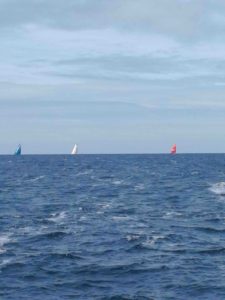
Next to all the scientific work we had some time to watch out for the Volvo Ocean Race. We were close to the route of the sailing boats and lucky to see them on their final finish route to Den Haag.
So another day on board ends, thanks to the weather with a great view on the North See.
… to be continued!
